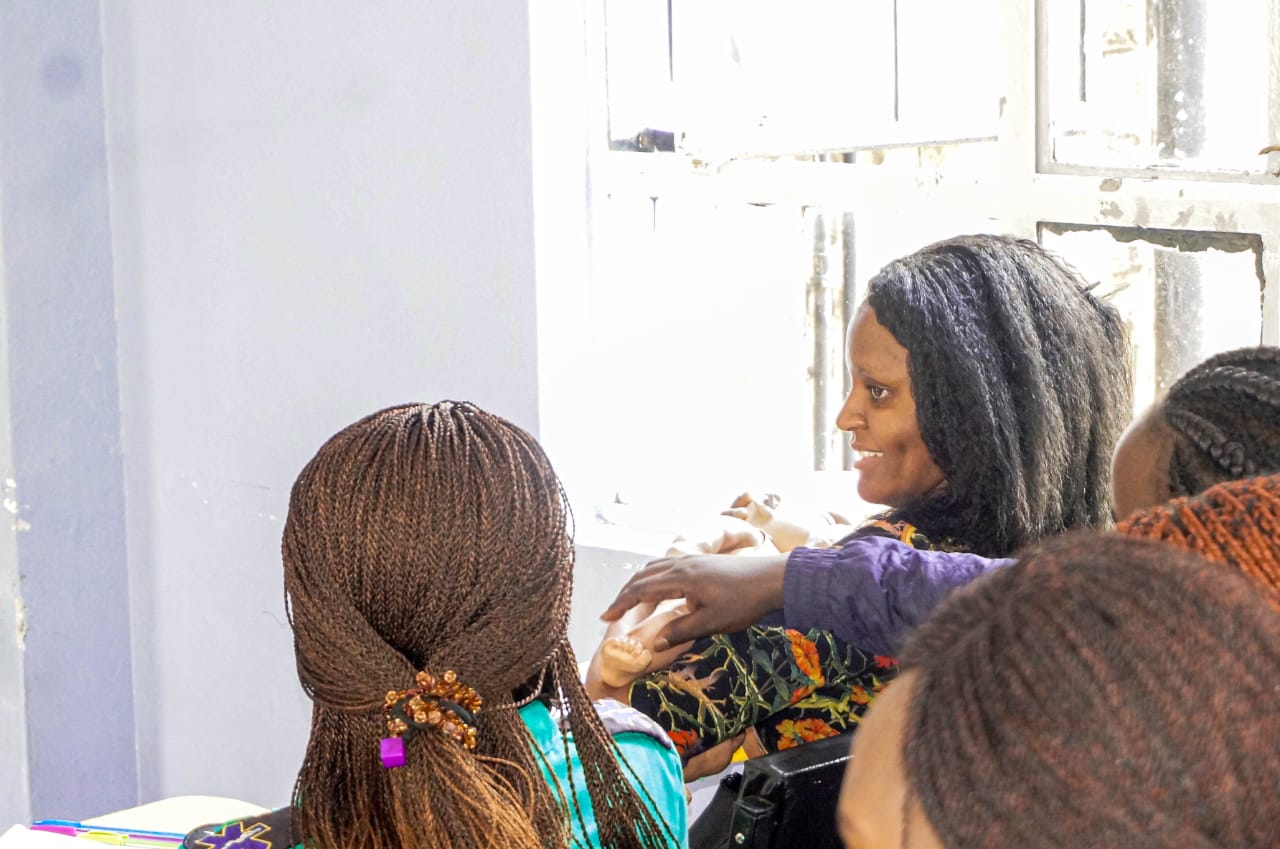- Sit comfortably-You need to sit comfortably to avoid straining your back, shoulder and neck. Make sure you sit in an upright position. Get a comfortable chair if you must. As the baby grows you can breast feed in other different position but when the baby is very young, you need to sit upright. Remember you just gave birth, your back is still very weak. If need be, get some soft pillows for support.
- Get a nursing pillow- I think this was my favorite item I ever purchased. Even if you don’t have this nursing pillow, use any other pillow to help support you and the baby. I loved the pillow more so coz it could elevate the baby bringing her closer to my boobies and also support my hands comfortably. I could nurse for hours without being tired. It also come in handy if you went through C-section at it buffers the wound. It also had a tiny pocket where I could put my phone to catch up with the world while breastfeeding.
- Hold the baby in position- This was the hardest thing for me. It was easier in theory than practical. I hope I will simplify for you. If you want to breast feed the right breast, place the baby on the nursing pillow with her head on your the right side. Slide your right hand through her back and using your palm, hold the babies bum. The baby’s head automatically be supported by your upper arm. Bring the baby to your tummy and ensure her tummy and your tummy are in contact. In this position, your baby’ ear, shoulder are aligned making swallowing easier. Is that clear? Try it out! Make sure you bring your baby to you, do not try to lean into the baby. Not only will this cause severe strain on your neck and shoulders, but it can affect the baby’s position.
- Hold your breast- For the first days of breastfeeding, you may want to guide your nipple into the baby’s mouth. Using your free hand (in this case the left hand because your right hand is supporting the baby) grasp your breast on the side using a “C” hold or “U” hold. The “U” and “C” shape is formed by the fingers and your thumb. So, your breast is between your thumb and fingers. Most people make mistakes of using two fingers to support the areola (dark part of the breast) which leave the baby with no choice but suck the nipple only. This is a recipe for disaster as your nipples will crack. Make sure to keep fingers far from the nipple so you don’t affect how the baby latches on.
- Latch- This is where the real test is. Your nipple should be opposite the baby’s nose. To entice the baby to open her mouth, you might need to rub the nipple across the top lip. When she opens her mouth wide with the chin dropped and tongue down, insert the breast into her mouth. Ensure that most of the areola is in the mouth. The baby will start suckling. To know that your baby has latched properly, no sound should be produced as an act of suckling. If some clicking/ smacking sort of sound is produced, the baby may just have latched onto the nipple only and may be struggling to get milk. This may over burden the nipple leading to cracking. To avoid this, press the baby’s cheek with your finger to prompt her to open her mouth to release the nipple. Repeat the latching process until you get the right position.
- Tongue is seen when the bottom lip is pulled down
- Ears wiggle
- There is a circular movement of the jaw rather than rapid chin movement
- Cheeks are rounded
- You do not hear clicking or smacking noises
- You can hear swallowing
- Chin is touching your breast
- When your baby comes off the breast, the nipple is not flattened or misshaped
- Any discomfort ends quickly after getting the baby latched on
- Your baby ends the feeding with signs of satiety/satisfaction. These signs include: the baby looks relaxed, “falls” off the breast, has open hands, and/or falls asleep.

